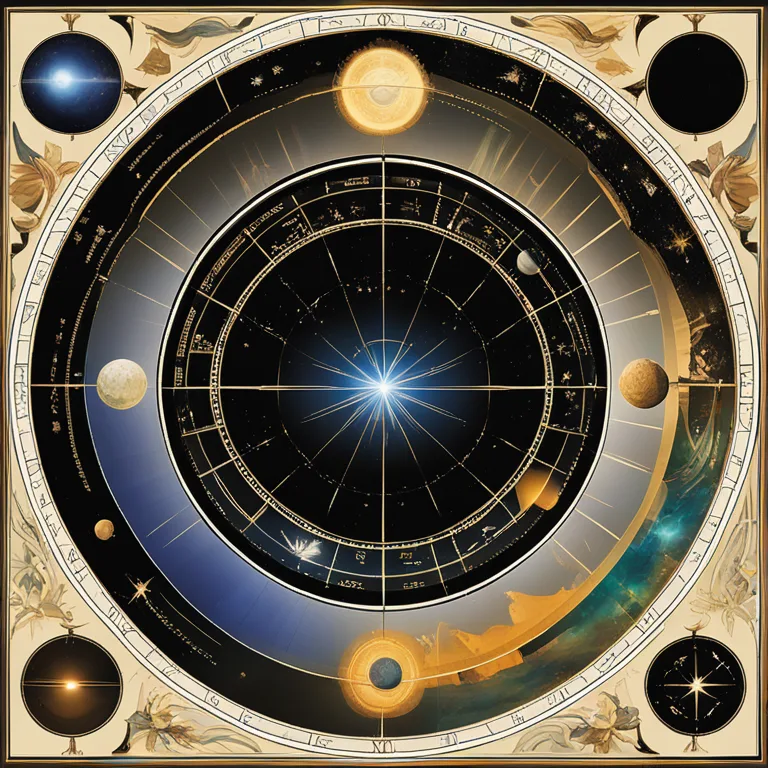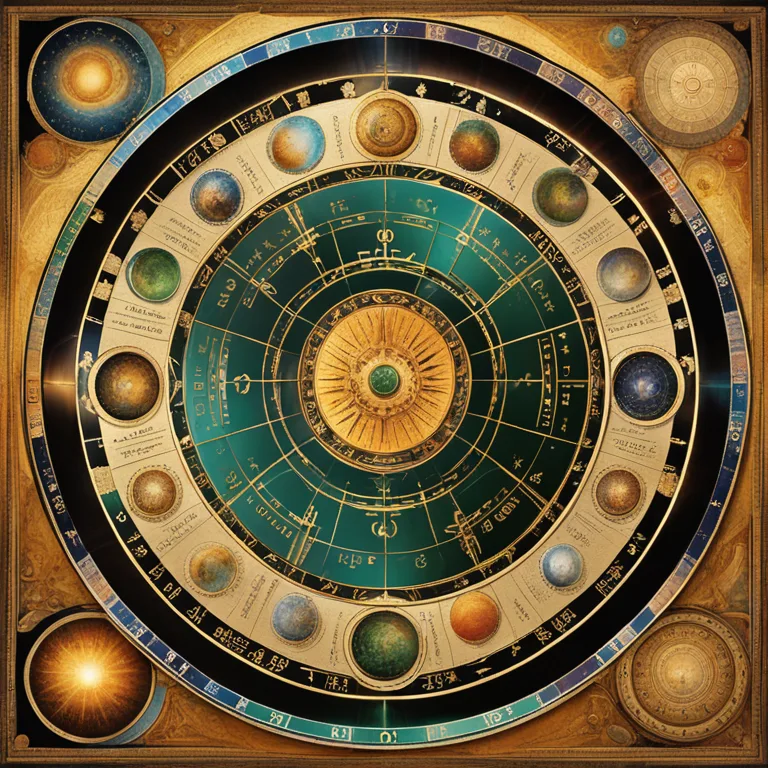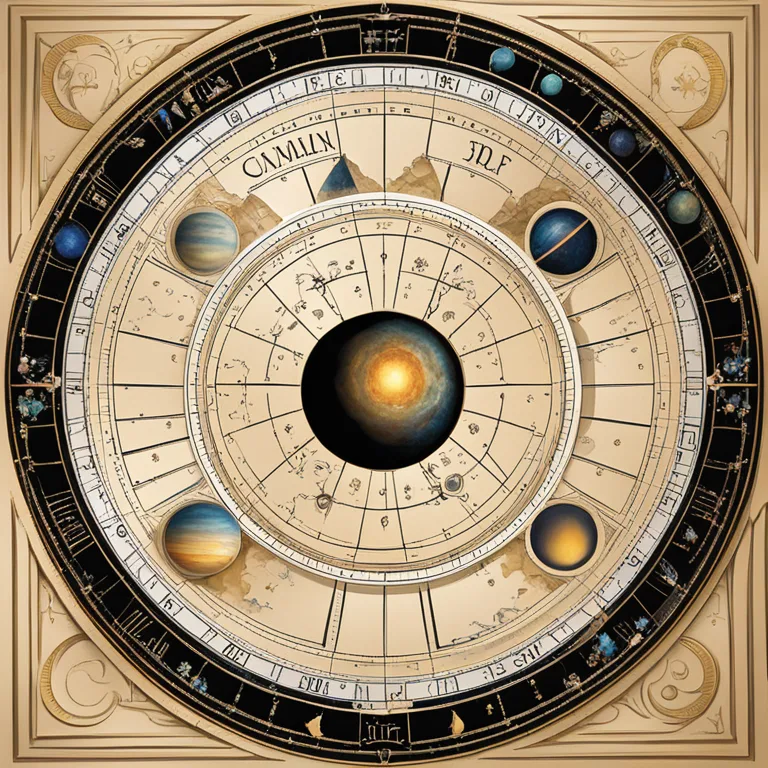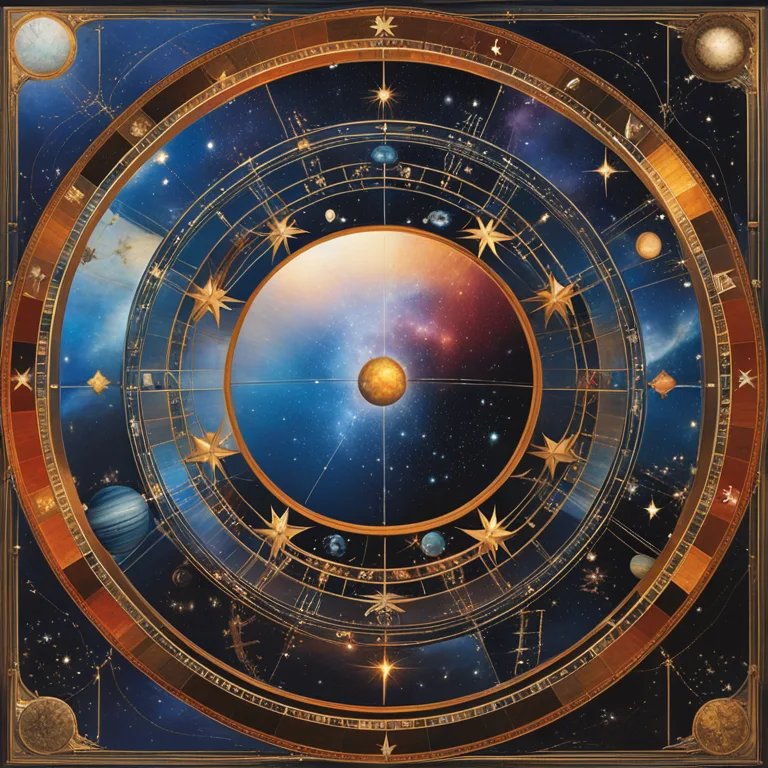
The Significance of Birth Chart Denominations
Discover the various names and systems used in astrology for deciphering birth charts, shaping identities, and predicting life's path.
article by Priya Deshmukh
Nomenclature of Natal Maps
Astrological birth charts, also known as natal charts or horoscopes, are personalized maps of the sky at the exact moment of a person's birth. These celestial snapshots capture the positions of the sun, moon, planets, and zodiac constellations, each playing a unique role in forming our astrological profile. The terminology for birth charts is as rich and varied as the practice of astrology itself. With roots in various cultures, the names for these astrological blueprints stem from Greek, Latin, and even Sanskrit origins, bridging the past and present's cosmic curiosity.

The Wheel of Life’s Secrets
Beyond being a natal chart, your astrological diagram is often referred to as the 'Wheel of Life' by practitioners. This poetic title emphasizes the belief that the horoscope wheel encapsulates the essential aspects of one's journey through life. As the planets continue their celestial dance, they form dynamic aspects and transits, which are believed to symbolize the ebb and flow of experiences and emotions that define our existence.

Radix: The Root of Existence
Another term frequently used in astrology is 'Radix', which comes from Latin meaning 'root'. A Radix chart, therefore, denotes the foundational astrological chart from which one's life patterns and potentials can be inferred. As astrological practice has evolved, so too has its vocabulary, accommodating new terms and concepts that provide nuanced interpretations of the celestial imprints.

Cosmogram: Connecting the Cosmos
In some circles, the birth chart is also known as a 'Cosmogram', highlighting the cosmological aspect of astrology. This term reflects the belief in an interconnected universe where an individual's life is a microcosmic reflection of the macrocosm. A Cosmogram represents this philosophical stance concisely, inviting reflection on the grand scheme of life and the cosmos.

Genethliac Chart: A Celebration of Birth
'Divining destiny' is perhaps one of the most antiquated aspects of astrology, and it is encapsulated in the term 'Genethliac Chart,' derived from the Greek term for 'pertaining to one's birth.' Traditionally, astrologers have used such natal diagrams to predict significant life events, personality traits, and even an individual’s destiny. In contemporary times, however, most astrologers use genethliac charts as a tool for self-understanding and personal growth rather than rigid fortune-telling.
Future Trends In Astrology
Looking forward into 2024 and beyond, astrology will continue to adapt and grow, just as it has for millennia. As we venture further into the 21st century, birth chart interpretations are likely to incorporate burgeoning fields such as astrocartography, which explores the influence of different geographical locations on an individual's astrological makeup. Moreover, the digital revolution is set to deepen with interactive charts and AI-assisted readings becoming commonplace, offering personalized insights based on birth chart data.
Conclusion
The various names given to birth charts throughout history reflect their multifaceted nature and the profound influence they claim to have on individual lives. Names such as 'Wheel of Life,' 'Radix,' 'Cosmogram,' and 'Genethliac Chart' articulate astrology’s essence and its timeless allure. As we move through the Age of Aquarius, the wisdom encoded in the stars, deciphered through these various birth chart denominations, continues to inspire and guide those who seek it.
Published: 12/27/2023
Modified: 12/28/2023
More predictions
Come back here soon to learn more about yourself and your future


Your Birth Chart in Astrology: A Cosmic Blueprint
Delve into the stars with our guide to understanding your astrological birth chart—a mirror to your potential and path.


Can Your Birth Chart Reveal Fertility Changes?
Discover how astrology may influence fertility and pregnancy predictions through the insights of a birth chart.


Your Birth Chart’s Tale: Forecasting Life’s Path
Peer into the celestial narrative of your birth chart to glean insights and forecasts for your journey ahead.